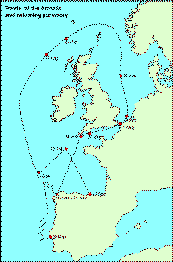

Elizabeth assembled a defensive force of 40 warships under the command of Lord Howard of Effingham, a High Admiral, and Francis Drake, an enigmatic sea captain with previous experience fighting against Spanish ships. Philip II wanted to put an end to all this by claiming England as his own.Įngland might not have been as rich and powerful as the Spanish Empire, but it was still a wealthy nation which refused to go down without a fight. Elizabeth had vehemently promoted Protestantism in her own country, while also funding Protestant movements in France and the Netherlands. The queen at that time was Elizabeth I, the daughter of Henry VIII. The ‘Invincible Armada’, as it was known by some, set its sights upon Protestant England. These ships were manned by 8000 sailors, with about 18,000 soldiers controlling the cannons and guns. He proceeded to assemble the Spanish Armada, an enormous fleet of 130 ships. In the 1580s, Philip II of Spain, the Catholic ruler of the largest empire on the entire planet, decided to tackle the forces of Protestantism head on. This allowed him to divorce his first wife, after the Pope had previously refused to annul the marriage. Henry VIII famously turned England into a Protestant country by forming the Church of England. Protestantism was embraced by a number of monarchs, including those of England, who wanted to break free from the interference of the Pope. It encouraged people to reject the Pope, and focus instead on finding a personal relationship with God. Protestantism, as it came to be known, was a protest against Catholicism. In 1517 CE, a new branch of Christianity was created.

The Spanish Empire was also a stronghold for Catholicism, and had the personal backing of the Pope. Some people called it ‘the empire on which the sun never sets’, as the territory covered so many time zones that it was always daytime somewhere. The Counter Armada Catholicism versus Protestantismĭuring the 16th century, the Spanish crown ruled over a vast and powerful empire, including a portion of Europe, the majority of the Americas, parts of Africa, and the Philippines.


 0 kommentar(er)
0 kommentar(er)
